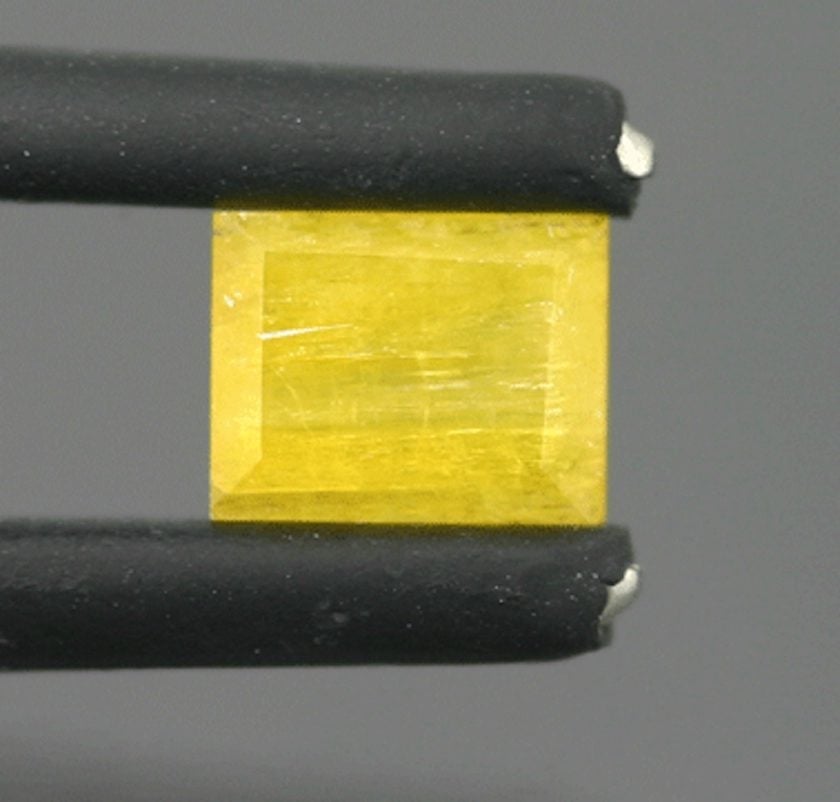Legrandite Value, Price, and Jewelry Information
Too soft for jewelry use, legrandite is a popular collector’s mineral because of its intense yellow color and aesthetic crystal groupings. Transparent, faceted gems are extremely rare.
1 Minute Read
Too soft for jewelry use, legrandite is a popular collector’s mineral because of its intense yellow color and aesthetic crystal groupings. Transparent, faceted gems are extremely rare.
Start an IGS Membership today
for full access to our price guide (updated monthly).Legrandite Value
Does Legrandite Make a Good Jewelry Stone?
First described in 1932, legrandite has become one of the loveliest of all rare collector gemstones. Its yellow color is quite distinctive and appealing (but tends to appear splotchy). However, you're more likely to find legrandites in a mineral collection than a jewelry collection.
With a relatively low hardness of 4.5, this gemstone has greater susceptibility to scratches than more popular jewelry stones. Protective settings would be advisable, but legrandites have another significant drawback as jewelry stones.
Is Legrandite Hazardous?
Legrandite contains arsenic. In inorganic mineral form, arsenic is especially dangerous, and ingestion is its most toxic exposure pathway. Due to legrandite's low hardness, normal jewelry wear could easily scratch the stone. This could create tiny, loose particles that could be ingested accidentally. For this reason, jewelry use isn't recommended.
Gem cutters should take special precautions while working with legrandites. Consult our lapidary safety tips for more information.
Displaying legrandites should pose no risks. However, make sure the specimens are secured beyond the reach of small children and pets.
Are There Synthetic Legrandites?
There are no known synthetic legrandites or treatments for these gems.
Where are Legrandites Found?
To date, only Mexico has produced cuttable material. Legrandite was first discovered in the Flor de Peña Mine, Nuevo León. However, the best-known gem locality is the Ojuela Mine, Mapimí. It produces magnificent crystal clusters, single crystals up to 6 cm long and 7.5 mm thick.
Other notable crystal sources include the following:
- Minas Gerais, Brazil; Japan; Tsumeb, Namibia; Sterling Hill, New Jersey, USA.
Stone Sizes
The largest faceted legrandites range from 2 to 4 carats in size, although a 10-ct stone has been reported. Still, larger cut stones are great rarities, and even 1-ct gems are hard to find.
Transparent crystals are usually small in size. The larger the crystal, the more opaque (translucent) it becomes. Many mineral specimens exist. However, transparent crystals occur very rarely, even at the source locality.
How to Care for Legrandites
Clean legrandites only with warm water, mild detergent, and a soft brush. For more recommendations, consult our gemstone jewelry care guide.
Joel E. Arem, Ph.D., FGA
Dr. Joel E. Arem has more than 60 years of experience in the world of gems and minerals. After obtaining his Ph.D. in Mineralogy from Harvard University, he has published numerous books that are still among the most widely used references and guidebooks on crystals, gems and minerals in the world.
Co-founder and President of numerous organizations, Dr. Arem has enjoyed a lifelong career in mineralogy and gemology. He has been a Smithsonian scientist and Curator, a consultant to many well-known companies and institutions, and a prolific author and speaker. Although his main activities have been as a gem cutter and dealer, his focus has always been education. joelarem.com
International Gem Society
Related Articles
Black Diamond Value, Price, and Jewelry Information
Chameleon Diamond Value, Price, and Jewelry Information
Gray Diamond Value, Price, and Jewelry Information
Green Diamond Value, Price, and Jewelry Information
Latest Articles
Quartz Toxicity: Understanding the Risks for Jewelers and Wearers
Synthetic Amethyst: What is it and How is it Made?
Hambergite Value, Price, and Jewelry Information
Pearl Simulants: How to Spot Faux Pearls
Never Stop Learning
When you join the IGS community, you get trusted diamond & gemstone information when you need it.
Get Gemology Insights
Get started with the International Gem Society’s free guide to gemstone identification. Join our weekly newsletter & get a free copy of the Gem ID Checklist!
